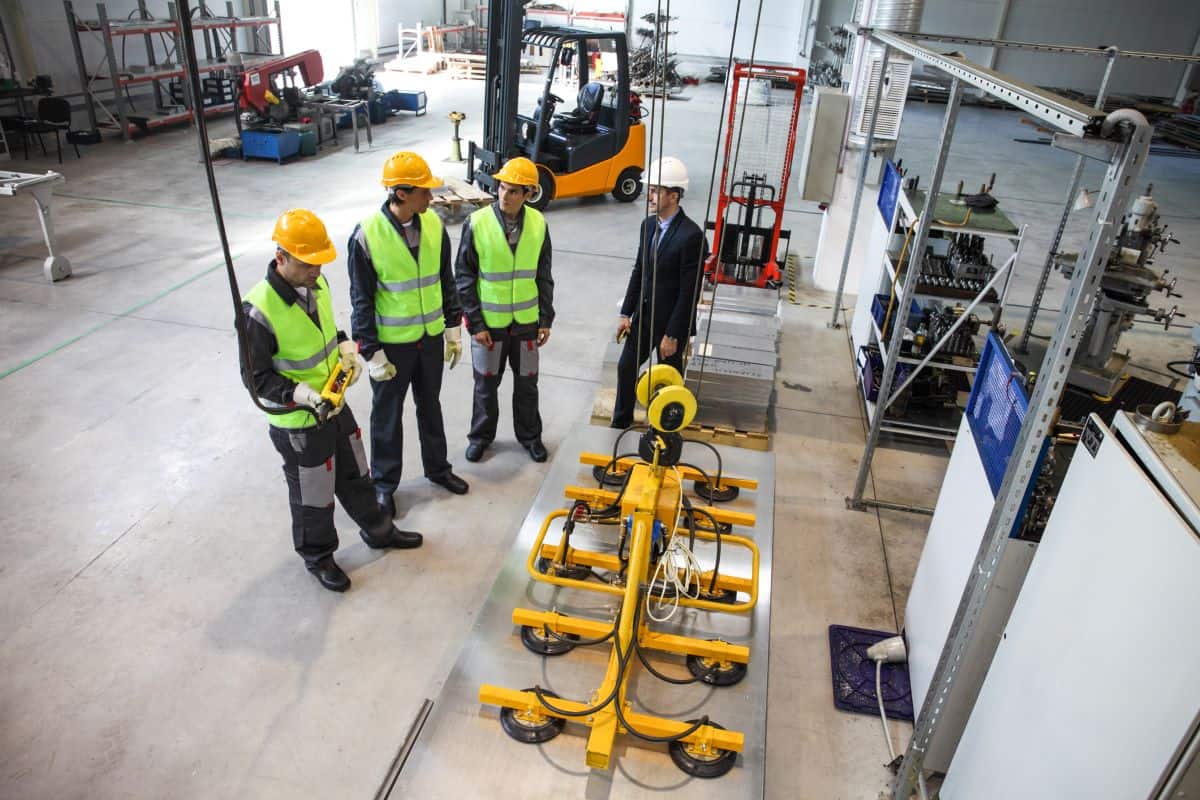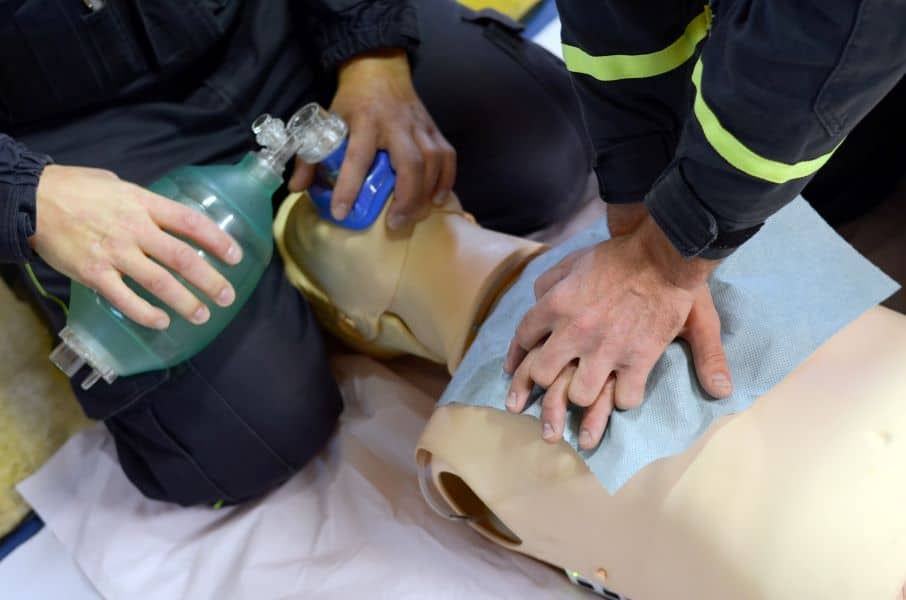Technology has revolutionised virtually every aspect of industrial operations, and forklift training is no exception.
In recent years, the introduction of advanced simulations, virtual reality (VR), and augmented reality (AR) applications have transformed traditional methods of forklift operation training.
These technological advancements offer trainees immersive and interactive experiences that are not only safer but can be more effective than traditional hands-on training.
They simulate realistic environments and scenarios, allowing trainees to practice and develop their skills without the risks associated with operating actual machinery in a live setting.
In addition to improving safety, these technological tools also bring about efficiencies in training time and costs. Training programmes that leverage technology can be standardised and scaled, making it easier to train a large number of operators across various locations.
Furthermore, the data collected from these training sessions can provide valuable insights into an operator’s performance, ensuring that the training is tailored to address specific areas of improvement.
As industries continue to seek productivity gains and heightened workplace safety, technology-driven training solutions are becoming increasingly vital in preparing a skilled forklift workforce equipped to meet modern demands.
Evolution of Forklift Training
Forklift training has undergone significant transformations over the years, keeping pace with technological advancements.
In the past, forklift training primarily consisted of instructor-led sessions, where trainees would learn through direct observation and hands-on practice. These sessions were often held on-site, with a focus on practical experience in real-world scenarios.
Virtual Reality (VR) has made a prominent entry into forklift training methods.
Trainees can now put on VR headsets to immerse themselves in lifelike simulations of warehouse environments. This allows for a safe and controlled learning space where mistakes don’t have real-world repercussions.
The introduction of e-learning platforms has also shaped the training landscape.
Trainees can access educational material online, allowing for flexible learning schedules. The materials often include interactive modules, quizzes, and videos to enhance understanding.
Moreover, the use of augmented reality (AR) is on the rise.
AR overlays digital information in the real environment, enabling trainees to receive real-time guidance and feedback during hands-on training.
Management Systems have been integrated to track and record training progress.
They provide a detailed analysis of a trainee’s performance, pinpointing areas of strength and those needing improvement.
Lastly, simulators have been developed to mimic the operations of various forklift types. They replicate physical sensations such as steering resistance and load balance, which are crucial for effective skill development. These advancements have not only made forklift training more accessible and efficient but also greatly reduced the risk of accidents during the training phase.
Technological Advances in Training
The landscape of forklift training is undergoing significant change due to technological innovations.
Virtual reality (VR) has introduced a hands-on, immersive experience where trainees can safely practise their skills. Through VR, operators learn to navigate warehouse environments and handle materials without the risk of accidents.
Another key development is the utilisation of augmented reality (AR). AR overlays digital information onto the physical world, providing real-time guidance and feedback.
Trainees can see paths and identify hazards marked out in their field of vision, enhancing situational awareness. Simulation technology has also been integral in evolving forklift training.
High-fidelity simulators replicate real forklifts’ controls and physics, allowing learners to experience the subtleties of operation, such as weight distribution and momentum, in a controlled environment.
Forklift telematics systems have been instrumental in training by collecting data on operator behaviour. These systems provide insights into efficiency and safety, enabling tailored training programmes.
Instructors can identify specific areas for improvement, ensuring that training is focused and effective. E-learning platforms facilitate training flexibility, allowing operators to complete theoretical components online at their own pace. This method supports a blended learning approach, combining online education with practical, hands-on training.
Together, these technological advancements in forklift training are cultivating more competent and confident operators, ultimately leading to safer and more efficient workplaces.
Virtual Reality and Simulation
Virtual reality (VR) technology is transforming forklift training, offering a risk-free environment for operators to hone their skills.
Trainees can now don immersive headsets that replicate the forklift operating experience, allowing for practical learning without the associated dangers of a physical workspace.
Simulators are increasingly sophisticated, with realistic controls and feedback systems that closely mimic the behaviour of actual forklifts.
Trainees are presented with a variety of scenarios, ranging from standard warehouse operations to challenging situations, enhancing their problem-solving skills and preparedness for real-world tasks.
Pros of VR in Training:
- Safety: Practitioners learn in a safe, controlled virtual space, reducing the risk of accidents during training.
- Cost-effectiveness: Virtual training minimises wear and tear on physical equipment and reduces the need for fuel or battery power.
- Flexibility: Programs are adaptable to individual learning paces and can be accessed at any time, facilitating self-paced learning.
Incorporated Technologies:
- Haptic Feedback: Provides tactile sensations, giving trainees the feel of the weight and motion of a forklift.
- Motion Tracking: Captures the operator’s movements, allowing for precise skill assessment.
Simulated training is gaining favour among organisations looking to enhance operator proficiency while maintaining a commitment to safety and efficiency.
With virtual reality, the potential for human error during the learning process is significantly lowered, creating a breed of forklift operators who are well-versed in their duties before they ever handle real-world materials.
Mobile Learning and Applications
With the progressive shift towards digitalisation, forklift training has been incorporating mobile learning and applications. This approach enables learners to access training materials anywhere, fostering a flexible learning environment.
Mobile applications are particularly instrumental in delivering interactive content, such as simulation-based learning, which significantly enhances the hands-on experience for operators.
Training apps often include a range of multimedia resources, such as videos and diagrams, presenting information in a digestible manner. They employ quizzes and interactive tests to cement knowledge and provide immediate feedback.
The portability of smartphones and tablets means that operators can engage with training modules during breaks, or at their own convenience, without the need for physical textbooks or a fixed training location. Another advantage lies in the customisation potential of mobile learning.
Applications can be tailored to fit individual learning paces and preferences, ensuring that all operators can work through the material in a way that best suits their learning style.
Many apps also track progress, enabling trainees and trainers to monitor improvement over time. In addition, with the advent of augmented reality (AR) in mobile apps, forklift training can present real-world scenarios in a controlled and risk-free virtual setting.
These technological advancements in mobile learning tools are not only enhancing the way forklift operators are trained but also improving safety and efficiency on the warehouse floor. The trend indicates a future where the fusion of technology and education becomes increasingly integral to vocational training practices.
Benefits of Tech-Enhanced Training
Technology has streamlined forklift training, offering several advantages to both trainees and trainers. First and foremost, simulator-based training allows operators to experience realistic scenarios without the risks associated with operating a real forklift.
This hands-on approach significantly reduces the likelihood of accidents during the learning process, as trainees can safely make mistakes and learn from them. Another key benefit is the customisation and variability of training environments.
Digital platforms can replicate diverse settings and challenges, ensuring that operators are well-prepared for any situation they might encounter in the workplace. This kind of preparation is invaluable as it ensures a thorough understanding of forklift operations within different contexts.
Immediate feedback is another crucial aspect of tech-enhanced training.
Trainees receive real-time, data-driven feedback, which accelerates the learning curve and helps in the rapid development of their skills. This immediate response allows learners to quickly correct their errors, leading to more efficient training sessions. Finally, technology has made training more accessible.
With virtual training modules, employees can train at a time that is convenient for them, possibly even from remote locations. This flexibility ensures that training does not interfere with the normal operations of the business, as employees can upskill without taking extended time away from their regular duties.
Challenges and Considerations
With the advent of advanced technologies in forklift training, instructors must consider several challenges.
Integration of Technology is a primary challenge. Implementing virtual reality (VR) and simulation-based training requires significant investment.
Organisations must weigh the cost against the improved safety and efficiency these technologies can bring.
Technology Acceptance is another consideration. Some trainees may be resistant to change, preferring traditional training methods.
Training programs need to ensure a smooth transition and demonstrate the effectiveness of new technologies to encourage acceptance.
Quality of Training Content is crucial. With the shift towards technology-driven methods, the content must be of high quality and reflective of real-world scenarios to ensure trainee engagement and learning retention.
There’s also a legal aspect to consider, particularly in ensuring that the training complies with the Australian Workplace Health and Safety regulations. Technological solutions must be up-to-date with current laws and standards.
A Skills Gap can also be present, as trainers may need additional skills to effectively deliver technology-enhanced training. Organisations should invest in upskilling trainers to ensure the full potential of the technology can be realised.
Lastly, Maintaining Equipment is important. High-tech training equipment will require maintenance and updates. Organisations need to ensure they have the capabilities to maintain the technologies to avoid disruptions in training.
The Future of Forklift Training
Technological advancements are set to revolutionise the way forklift operators are trained. Virtual reality (VR) and augmented reality (AR) are emerging as powerful tools, enabling trainees to practise in safe, controlled virtual environments. This simulates real-life scenarios without the associated risks.
As VR headsets become more affordable, they will be widely adopted within forklift training programs.
Artificial intelligence (AI) is poised to customise the learning experience. AI can assess an operator’s performance and tailor the training modules to their individual learning pace and areas for improvement. This ensures efficient and effective training periods, maximising retention and competency.
E-learning platforms are gaining traction, allowing for remote instruction and certification. This convenience will likely lead to a higher adaptability rate among companies, reducing downtime associated with traditional, in-person training sessions.
The integration of telematics into training programs will provide real-time data on forklift operations. This data is invaluable for monitoring trainees’ progress and ensuring that they adhere to safety protocols. Telematics systems can record metrics such as speed, accuracy, and safety compliance, providing a comprehensive overview of a trainee’s proficiency.
Conclusion
Advancements in technology have led to significant improvements in forklift training methods. Virtual reality (VR) and simulation have emerged as powerful tools, providing operators with a risk-free environment to practice their skills. By simulating realistic scenarios, trainees gain valuable experience without the potential hazards of on-the-job learning. E-learning platforms are also enhancing the way knowledge is delivered.
These platforms offer flexibility, allowing trainees to learn at their own pace and access training modules from any location. The integration of gamification elements has been another key development, making the learning process more engaging and interactive.
Data analytics now plays a crucial role in customising training programs. Instructors can track a learner’s progress and tailor the training to address specific weaknesses. This data-driven approach ensures that each operator achieves a high level of proficiency. The adoption of technology in training protocols has not only increased efficiency but has also led to better safety standards.
With real-time feedback and the ability to practice complex manoeuvres in a virtual setting, operators are better equipped to handle the demands of the modern warehouse environment.
These technological trends are indicative of a future where continuous learning and improvement are at the forefront. The investment in innovative training solutions reflects a commitment to enhancing operational efficiency while prioritising workplace safety. The evolution of forklift training is, therefore, a testament to the industry’s dedication to excellence and the health and welfare of its workforce.




